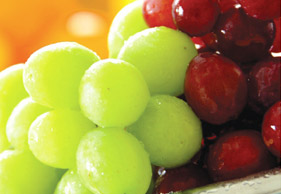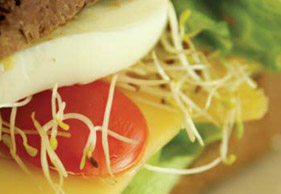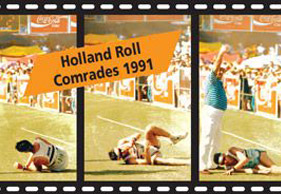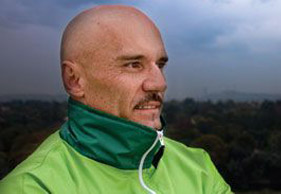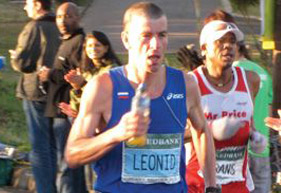Carbohydrates are too often seen as an enemy to weight loss, but Modern Athlete takes a look at some of the benefits of carbohydrates in promoting healthy living.
Carbohydrates are compounds that are made from carbon, hydrogen and oxygen. They come in two main forms, sugar and starch and their main function is to provide fuel for the body. Carbohydrates should therefore comprise at least 55% of an athlete’s total daily calories.
Some sugars, such as those in fruit, are found naturally in food and these have a place in a healthy diet. This is not necessarily true, however, for sugars that are added to food. Excess sugar in the diet causes fluctuations in blood sugar levels, which may increase the risk of conditions such as diabetes, cardiovascular disease and weight gain. Added sugars in food products are not always simply labeled ‘sugar’. You may see them labeled as: sucrose, corn syrup, fructose, glucose, invert sugar, lactose or maltose.
Fructose versus Glucose
Sugars are not all equal in their effects on the body. Fructose, the sugar found mainly in fruit, is generally regarded as a healthier form of sugar than sucrose (table sugar), as it doesn’t cause blood sugar or insulin levels to rise as dramatically. However, studies have recently shown that fructose can impair the body’s ability to handle sugar and can reduce the effectiveness of insulin. Long-term consumption of fructose may therefore lead to elevated levels of blood sugar and insulin, increasing the risk of conditions such as heart disease and diabetes.
Whole grains such as whole grain bread, whole wheat pasta and brown rice contain nutrients such as vitamin E, B1, B5, B6, and minerals such as folate, iron, zinc, magnesium, copper and manganese, and are a very good source of fibre. Therefore, they are considered to be superior to their refined counterparts, white bread, white rice and egg pasta. Unrefined starches release sugar into the body slowly, which is associated with lower risk of developing certain diseases, such as diabetes.
Fibre is comprised of indigestible plant material, which comes in two forms: soluble and insoluble fibre. Soluble fibre dissolves in the gut to form a gel-like substance that slows down the release of some nutrients, especially sugar, into the bloodstream. It also ‘traps’ cholesterol and reduces the absorption of it into the blood. This results in lower cholesterol levels, which reduces the risk of coronary heart disease.
As blood sugar levels rise, the body secretes a hormone called insulin, which transports sugar out of the bloodstream and into the body’s cells. In this way, blood sugar is lowered again. In general, the body copes better with foods that release sugar quite slowly in the bloodstream. If the blood sugar levels rise too quickly, the body tends to secrete a lot of insulin in response. This may drive blood sugar levels lower than normal, a condition termed ‘hypoglycaemia’, which can cause restlessness, irritability, poor concentration, visual disturbances, lethargy and drowsiness.
While the symptoms of low sugar levels are more obvious, symptoms of high sugar levels are not as easily detected, but can also cause serious damage to the body.
|To balance blood sugar, you need to eat a diet based on foods that control the release of sugar into the body. The speed and the extent to which a food increases blood sugar can be quantified by the glycaemic index scale. The higher a food’s glycaemic index, the faster it releases sugar into the bloodstream, and the worse it tends to be for blood sugar balance and thus, one’s health.
Cooking increases the digestibility of food, making it easier for most starches to be absorbed into the bloodstream. Eating more raw foods (especially vegetables) assists in keeping blood sugar low.
Whole grains are made up of bigger particles, so they take longer to be broken down and absorbed than flours made from the same grains.
Grinding, mashing, liquidising, milling, etc, make foods more refined, which makes them easier to absorb. Try eating foods in a less refined form.
Starches are made up of different structures. Predominantly amylose-structured starches (such as Tastic, long-grain and basmati rice) have long straight chains in a compact matrix, which makes them difficult to digest. Amylopectin-predominant starches (such as jasmine, Arborio or risotto rice) have their branches and chains loosely packed, making it much easier to digest them and increasing their GI value.
Soluble fibre makes a viscous gel that slows down gastric emptying, allowing for good nutrients to be absorbed. Good sources of soluble fibre include raw oat bran, legumes, citrus and deciduous fruit.
The higher the acidity of a food, the lower its GI value. Acid slows down gastric emptying. Therefore tart fruits, sour salad dressings, vinegar and lemon juice will lower the GI value of the dish. Sourdough breads such as ciabatta have lower GI values.
Blood sugar levels have been shown to rise much more slowly when foods are eaten at a more relaxed pace.
A mixture of fat and protein with starch can reduce the glycaemic response by delaying gastric emptying and increasing the secretion of insulin.
Resistant starch resists digestion in the small intestine and passes into the large intestine where it is fermented by bacteria to form short-chain fatty acids which have many health properties.
Healthy fruit scones
Serves six
2 cups wholemeal flour
2 tsp baking powder
1 tsp bicarbonate of soda
1/4 tsp cinnamon
1 cup dried dates, finely chopped
1/2 cup chopped pecans
1 ripe banana
3/4 cup milk
1 tsp lemon juice
Preheat oven to 250? C. Mix the flour, baking powder, bicarbonate of soda and cinnamon in a mixing bowl. In a smaller bowl, combine the banana and milk and mix until smooth. Add this to the large bowl. Mix in the dates and pecans and knead the mixture. Flatten the mixture on a baking tray and use a shape cutter to cut out the scones. Bake in the oven for 20 minutes or until cooked throughout.
For a late afternoon treat, serve with a dollop of honey or low fat whipped cream.

